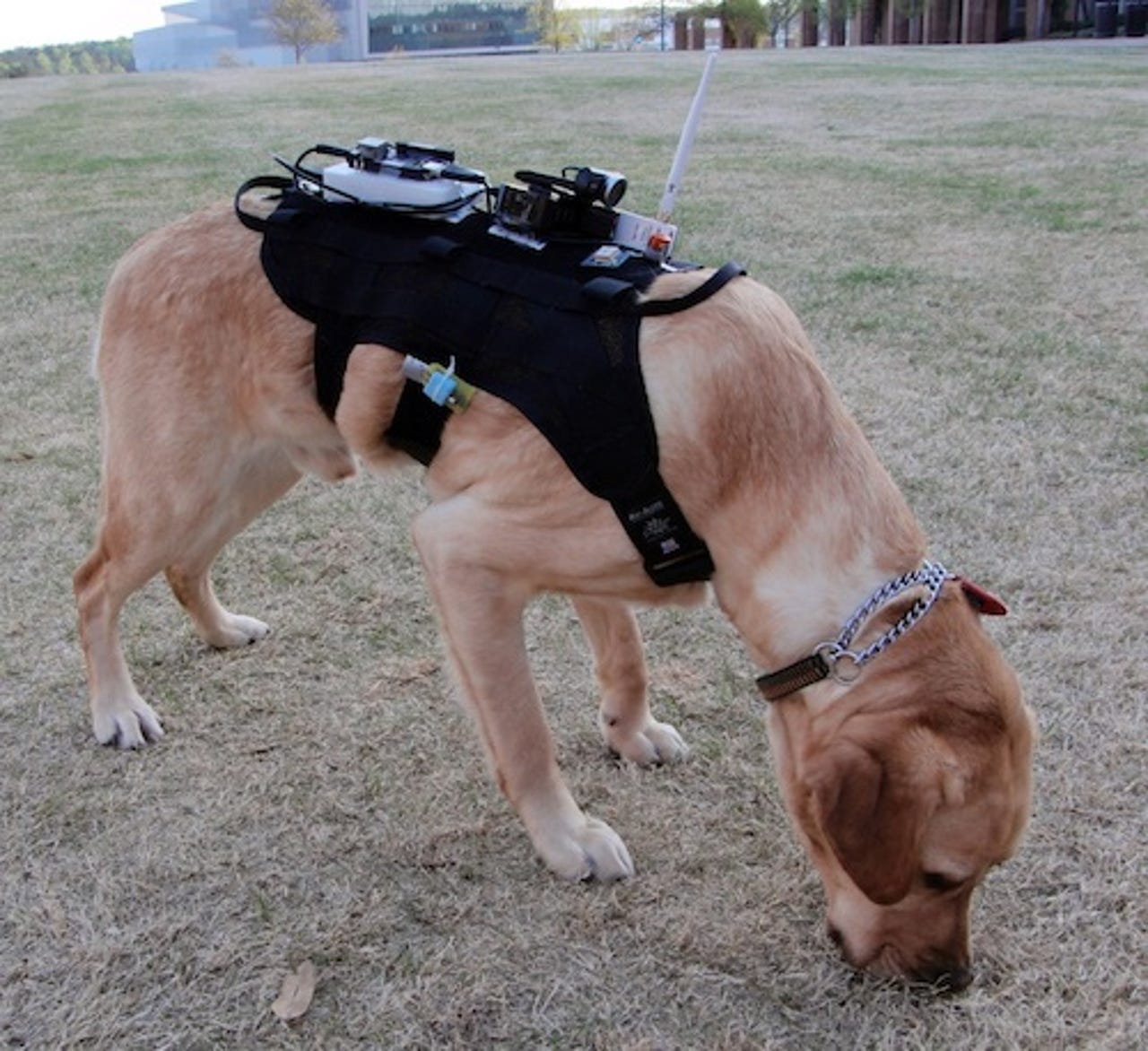High-tech harnesses for disaster response dogs


The Smart Emergency Response System (SERS) is a nationwide project across 20 or so institutions with the goal of using "cyber-physical" systems to share information and coordinate disaster relief responses in real time -- through a variety of wireless network technologies. A North Carolina State University team led by Alper Bozkurt and David Roberts is specifically working on the canine aspect of SERS.
By modifying off-the-shelf harnesses, they've developed a high-tech little backpack that's equipped with sensors and various other gadgets that will help dogs collect information. And of course, there are also sensors to check on the dogs' well-being (reward-based training techniques only). The three kinds of tech included are: environmental monitoring, dog monitoring, and active communication.
1. Passive environmental monitoring devices like microphones, cameras, and gas sensors will allow the dogs to retrieve and transmit data from the field in real time. Additional attachments might include a Geiger counter or sensors specific to natural gas. The sensors can be monitored remotely at the emergency response command center or by dog handlers on a handheld device nearby.
2. The team also developed new devices to monitor a dog's behavior and physiology, like their heart rate. The dog's well-being can be remotely tracked, and the command center can also determine if the canines have picked up a scent or found a specific person, object, or area of interest. The active communication technologies on the harness will allow handlers to relay commands to the dogs.
"We're developing a platform for sensors that is designed to be plug-and-play, allowing emergency responders to further customize the harness," Bozkurt explains in a news release. "We plan to continue to engage emergency response personnel to identify and overcome any obstacles to putting these smart-recovery techniques to work in the field," Roberts adds.
The harnesses aren't designed to replace human handlers -- they're more of a supplement, and a way to include dogs in the coordinated response network. After all, dogs can climb obstacles and locate victims accurately, the researchers say, and robots can't match their cognitive capacity, eyesight, hearing range, or sense of smell -- all of which remain efficient after long hours of work.
SERS teams will be participating in the Smart America Challenge in D.C. this summer.
[NCSU via LiveScience]
Images: Alper Bozkurt
Related on SmartPlanet:
- An emergency shelter that assembles in 5 hours
- Meet the team of robots who will dismantle Fukushima
- Crash test doggies take a hit so real dogs don't have to
- Rotterdam's rat police unit reports for duty
- Hunker down or run? What to do after a nuclear detonation
This post was originally published on Smartplanet.com